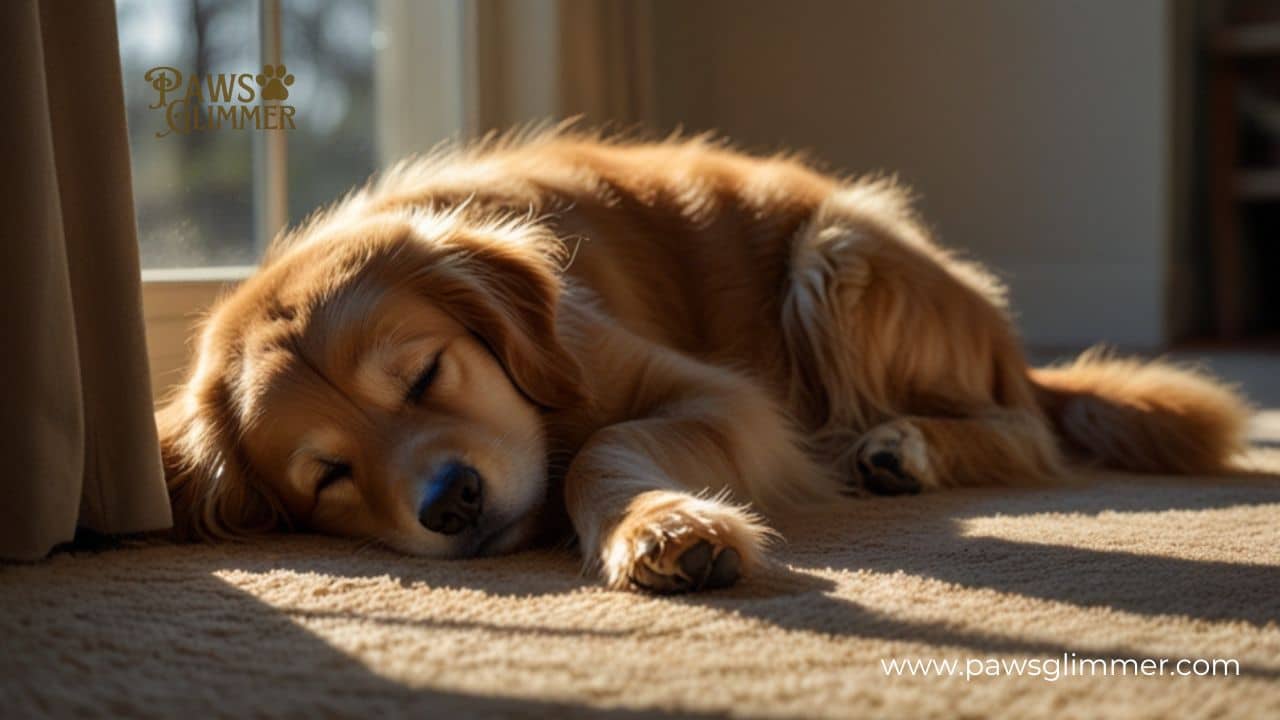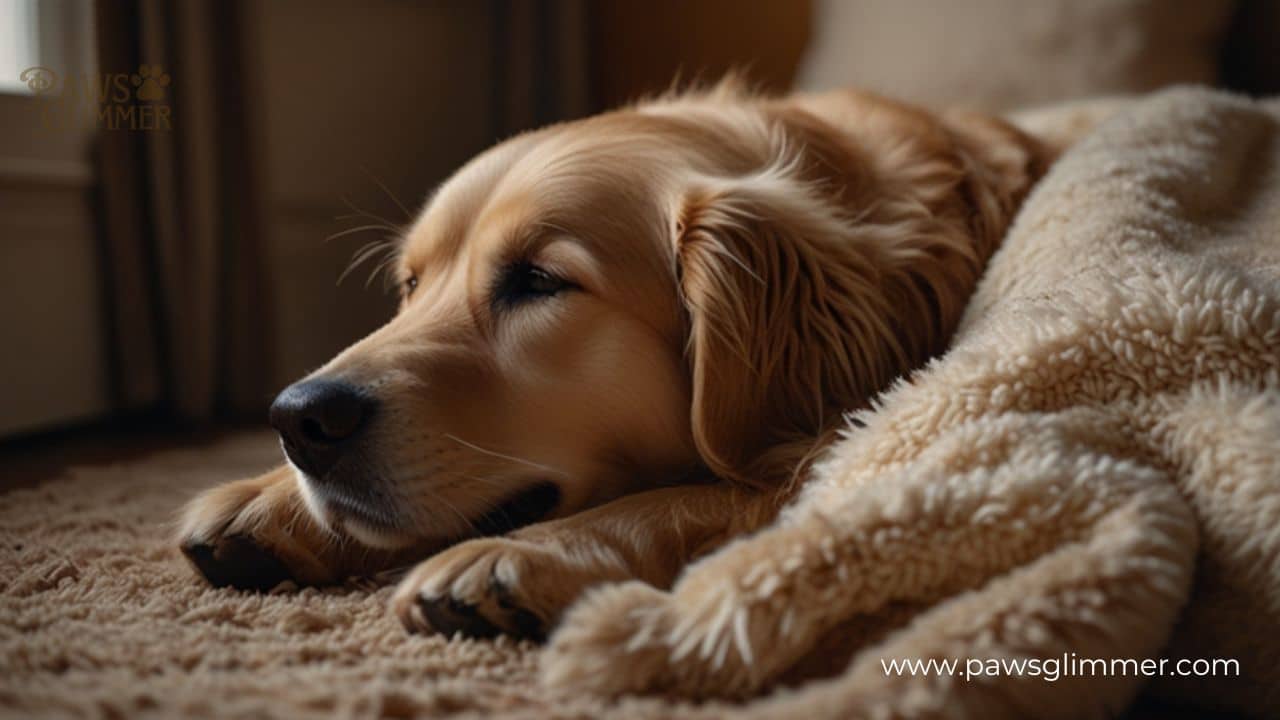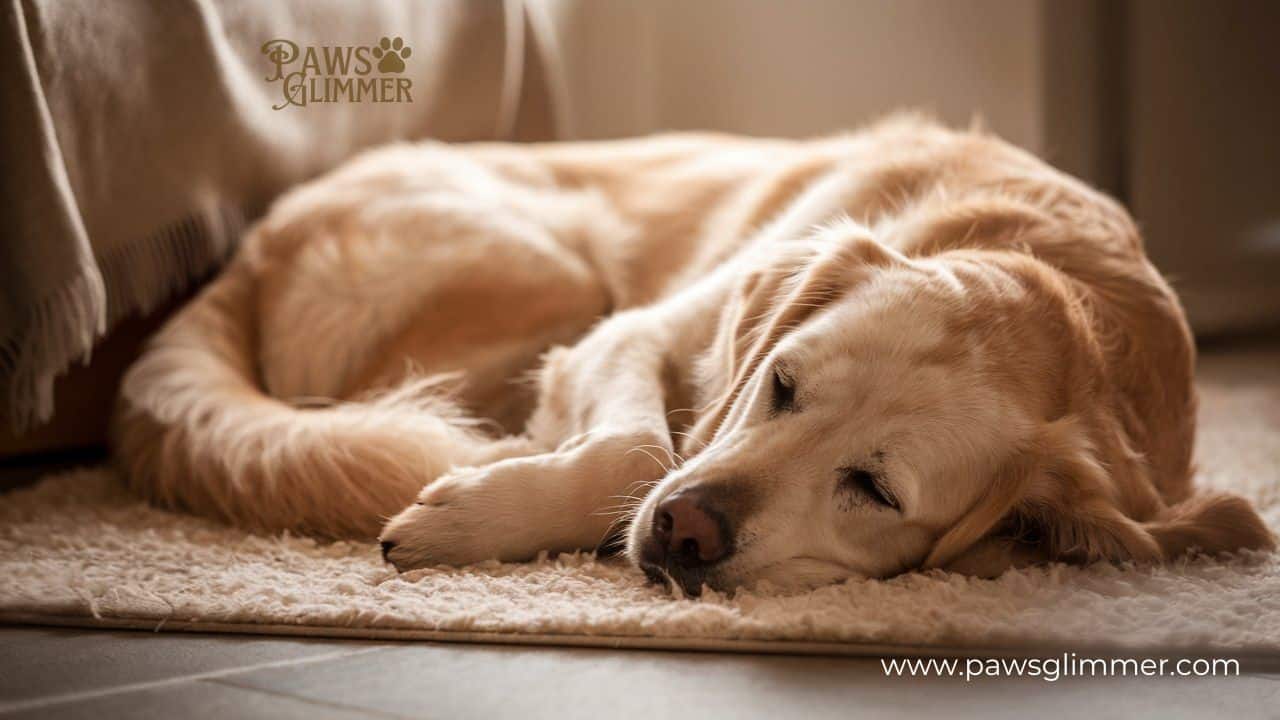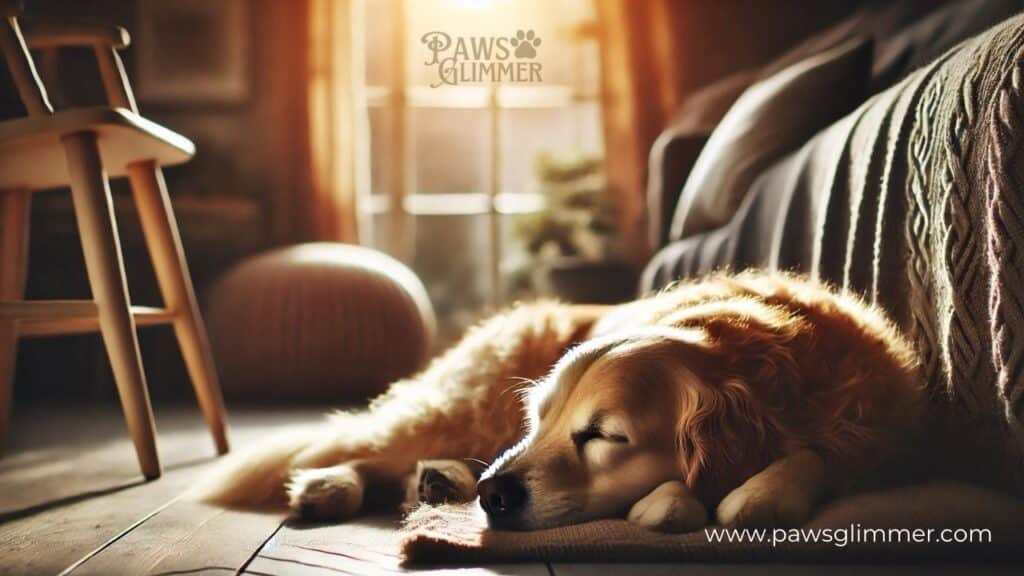As pet parents, we’ve all experienced that late-night moment when our canine companion’s soft whimpers pierce the silence. It’s a sound that can tug at our heartstrings and leave us wondering: why do dogs cry in their sleep? This comprehensive guide will unravel the mystery behind those nocturnal noises, offering insights into your four-legged friend’s sleep patterns and dreams. We’ll explore everything from the dog sleep cycle to potential health issues, ensuring you’re well-equipped to provide the best care for your furry companion.
Decoding Doggy Dreams: The Science Behind Sleep Vocalizations
Canine Sleep Cycles: REM vs. Non-REM Sleep
Just like humans, dogs experience different sleep stages throughout the night. The dog sleep cycle consists of two main phases: REM (Rapid Eye Movement) and non-REM sleep. Understanding these stages is crucial to interpreting your dog pal’s nighttime vocalizations.
- Non-REM Sleep: This is the initial stage where your dog starts to relax and fall asleep. Their breathing slows, and their body temperature drops.
- REM Sleep: This is where the magic happens. During the REM sleep cycle, your dog’s brain becomes highly active, similar to when they’re awake. This is when dog’s dreams occur.
| Sleep Stage | Duration | Characteristics |
|---|---|---|
| Non-REM | 10-30 minutes | Slow breathing, relaxed muscles |
| REM | 2-5 minutes | Rapid eye movement, twitching, possible vocalizations |
Dr. Stanley Coren, a canine psychologist, states: “Dogs experience dreams and nightmares just like humans do. The size of the dog often determines the length of the dream, with smaller dogs having shorter, more frequent dreams.”

The Brain’s Activity During Dog Dreams
During the REM sleep cycle, your loyal pet’s brain fires in patterns similar to when they’re awake. This neurological activity can lead to various dream-like behaviors, including:
- Twitching paws
- Tail wagging
- Eye movement
- Vocalizations (whimpers, growls, or barks)
These behaviors are often manifestations of your dog reliving daily experiences or processing emotions in their sleep.
Build a strong bond with your pets
Evolutionary Perspectives on Animal Dreaming
Interestingly, the ability to dream isn’t unique to dogs or even mammals. Studies suggest that many animals experience some form of dream phase. This shared trait across species indicates that dreaming serves an important evolutionary purpose, possibly related to memory consolidation and emotional processing.
Common Causes of Sleep-time Whimpers
Reliving Daily Experiences
Often, when your canine friend cries out in their sleep, they’re simply reliving moments from their day. This could be:
- Exciting play sessions
- Encounters with other dogs
- Frustrating experiences (like seeing a squirrel they couldn’t chase)
Processing Emotions and Memories
Dogs, like humans, use sleep to process emotional responses to daily events. If your dog had a particularly stressful or exciting day, they might vocalize more during sleep as their brain works through these emotions.
Physical Discomfort or Pain
Sometimes, crying during sleep can indicate underlying health issues. If your dog seems to be in distress, it’s essential to consult a vet for proper diagnosis. Potential causes could include:
- Arthritis
- Dental problems
- Digestive issues

Age-related Factors in Senior Dogs
As dogs age, they may experience changes in their sleep patterns. Senior dogs might vocalize more during sleep due to:
- Cognitive decline
- Decreased hearing or vision leading to increased anxiety
- Joint pain or other age-related physical ailments
The Sleep-Anxiety Connection
How Stress Impacts Canine Sleep Quality
Stress can significantly affect your dog’s dreams and sleep quality. Environmental stressors such as:
- Loud noises
- Changes in routine
- New household members (human or animal)
can lead to increased anxiety and more frequent sleep disturbances.
Signs your pet needs extra care and attention
Separation Anxiety and Nighttime Vocalizations
Dogs suffering from separation anxiety may experience more disturbed sleep, even when their pet guardians are home. This can manifest as:
- Increased whimpering or crying during sleep
- Difficulty settling down at bedtime
- Waking up frequently during the night
Environmental Triggers for Sleep Disturbances
Creating a cozy sleeping space for your dog can help reduce stress-related sleep issues. Consider factors like:
- Room temperature
- Ambient noise
- Lighting conditions

When to Worry: Red Flags in Doggy Sleep Patterns
Frequency and Intensity of Cries
While occasional sleep vocalizations are normal, frequent or intense crying might indicate a problem. Keep a log of your dog’s sleep behaviors to identify any concerning patterns.
Accompanying Physical Symptoms
Watch for physical signs that might accompany sleep vocalizations, such as:
- Excessive drooling
- Muscle stiffness
- Difficulty waking up
Changes in Daytime Behavior
If your dog’s sleep disturbances are accompanied by changes in their waking behavior, it’s time to consult a veterinarian. Look out for:
- Increased lethargy
- Appetite changes
- Unusual aggression or fear
Sleep Disorders in Dogs: A Brief Overview
Just like humans, dogs can suffer from sleep disorders. Some common canine sleep disorders include:
- Narcolepsy
- Sleep apnea
- Insomnia
- REM Behavior Disorder
If you suspect your dog might have a sleep disorder, consult with a veterinary specialist for proper diagnosis and treatment.
Nurturing Healthy Sleep Habits for Your Furry Friend
Creating a Sleep-friendly Environment
Providing a comfortable sleep area for your dog can significantly improve their sleep quality. Consider:
- A quiet location away from household traffic
- Plush bedding appropriate for your dog’s size and preferences
- Darkening curtains or a covered crate for dogs that prefer darkness
Establishing a Consistent Bedtime Routine
A regular bedtime routine can help signal to your dog that it’s time to wind down. This might include:
- A calm walk or playtime to burn off excess energy
- A small, easily digestible snack
- Quiet time with gentle petting or brushing
- Settling into their designated sleeping area

Exercise and Mental Stimulation for Better Sleep
Ensuring your dog gets adequate physical exercise and mental stimulation during the day can lead to better sleep at night. Aim for:
- At least 30 minutes of moderate exercise daily (adjust based on your dog’s age and breed)
- Interactive toys or puzzle feeders to keep their mind engaged
- Training sessions to provide mental challenges
Diet and Its Impact on Sleep Quality
What your dog eats can affect their sleep quality. Consider:
- Feeding the main meal earlier in the day
- Avoiding high-fat or hard-to-digest foods close to bedtime
- Ensuring access to fresh water throughout the day, but limiting intake right before bed
Understanding your pets behavior
To Wake or Not to Wake: The Great Debate
Pros and Cons of Interrupting Your Dog’s Sleep
While it might be tempting to wake your dog when they’re crying in their sleep, it’s generally best to let sleeping dogs lie. Here’s why:
Pros of waking:
- Can provide immediate comfort
- Might prevent escalation to more intense vocalizations
Cons of waking:
- Disrupts important sleep cycles
- May cause confusion or startle your dog
- Could reinforce attention-seeking behavior
How to Comfort Without Disturbing
If you feel the need to comfort your dog during sleep vocalizations, try:
- Speaking in a soft, soothing voice
- Gently placing your hand near them without touching
- Creating a calming atmosphere (e.g., soft music or white noise)

When Intervention is Necessary
In some cases, waking your dog might be necessary:
- If they seem to be in physical distress
- If their vocalizations are excessively loud or prolonged
- If you’re concerned about an underlying health issue
Tracking and Understanding Your Dog’s Sleep Patterns
Keeping a Sleep Journal
Maintaining a sleep journal for your dog can provide valuable insights. Record:
- Bedtime and wake-up times
- Duration and frequency of sleep vocalizations
- Any notable events or changes in routine
Using Technology: Pet Cameras and Sleep Trackers
Modern technology offers new ways to monitor your dog’s dreams and sleep patterns:
- Pet cameras with night vision and audio capabilities
- Wearable sleep trackers designed for dogs
- Smart dog beds that monitor sleep quality
Do you know why my cat nose white?
Interpreting Your Observations
Look for patterns in your dog’s sleep behavior. Are vocalizations more common:
- After certain activities?
- During specific weather conditions?
- At particular times of the night?
Understanding these patterns can help you address any underlying issues and improve your dog pal’s sleep quality.

When to Consult a Veterinarian
Persistent Sleep Disturbances
If your dog’s sleep vocalizations are frequent or intense, it’s time for a veterinary check-up. Persistent disturbances could indicate:
- Chronic pain
- Neurological issues
- Sleep disorders
Signs of Underlying Health Issues
Watch for these red flags that might indicate a need for professional evaluation:
- Changes in appetite or thirst
- Difficulty getting comfortable
- Excessive panting or drooling during sleep
Behavioral Changes Related to Sleep
If you notice significant changes in your dog’s behavior, both during sleep and waking hours, consult a vet. These changes might include:
- Increased aggression
- Confusion or disorientation
- Excessive clingy behavior
Natural Remedies and Therapies for Better Canine Sleep
Calming Aids: Pheromone Diffusers and Anxiety Wraps
Several natural products can help promote relaxation and better sleep:
- Dog-appeasing pheromone (DAP) diffusers
- Anxiety wraps or thundershirts
- Calming essential oils (used with caution and vet approval)
Massage and Acupressure Techniques
Gentle massage or acupressure can help relax your dog before bedtime. Focus on:
- Ears
- Neck and shoulders
- Paws
Herbal Supplements and Their Effectiveness
Some herbal supplements may help promote better sleep in dogs. Always consult with your vet before using any supplements. Popular options include:
- Chamomile
- Valerian root
- L-theanine
The Role of Breed and Size in Sleep Vocalizations
Breed-specific Sleep Behaviors
Different dog breeds may exhibit varying sleep behaviors. For example:
- Hunting breeds might be more prone to “chasing” in their sleep
- Guarding breeds may be more alert to nighttime noises
Size-related Sleep Patterns and Breathing Issues
A dog’s size can affect their sleep patterns and potential for vocalizations:
- Smaller dogs tend to dream more frequently but for shorter periods
- Larger breeds, especially brachycephalic (flat-faced) dogs, may be prone to sleep apnea and related vocalizations
Conclusion: Sweet Dreams for Your Furry Companion
Understanding why dogs cry in their sleep can help pet caregivers provide better care and ensure their canine companions get the rest they need. By recognizing normal sleep behaviors, addressing potential issues, and creating a sleep-friendly environment, you can help your loyal pet enjoy sweet, peaceful dreams.
Remember, every dog is unique, and what works for one might not work for another. Pay attention to your dog’s dreams and sleep patterns, and don’t hesitate to consult a vet for proper diagnosis if you have concerns. With patience, understanding, and love, you can help ensure your furry companion enjoys restful nights and happy, healthy days.

Raymond Dandan is a seasoned pet blogger with a passion for feline care and behavior. With years of experience and a deep love for cats, Raymond brings expert insights and practical tips to “PawsGlimmer.” His engaging writing and thorough research help cat owners provide the best for their furry friends, making him a trusted voice in the pet community.







